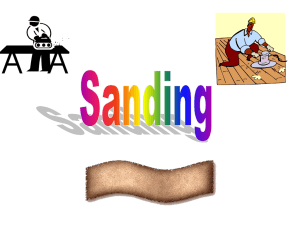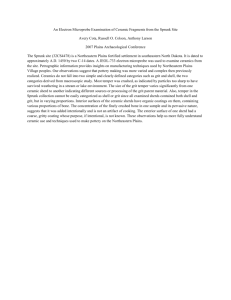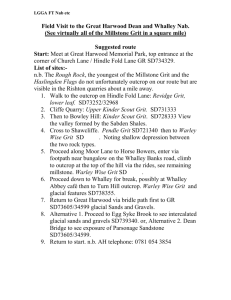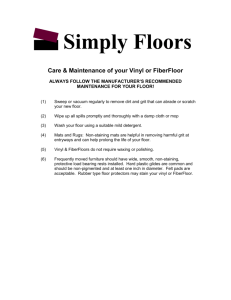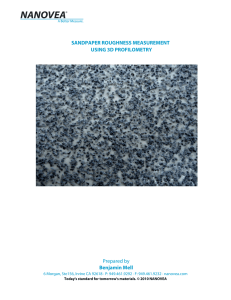Scientific Question How does the size of sand in sandpaper affect
advertisement
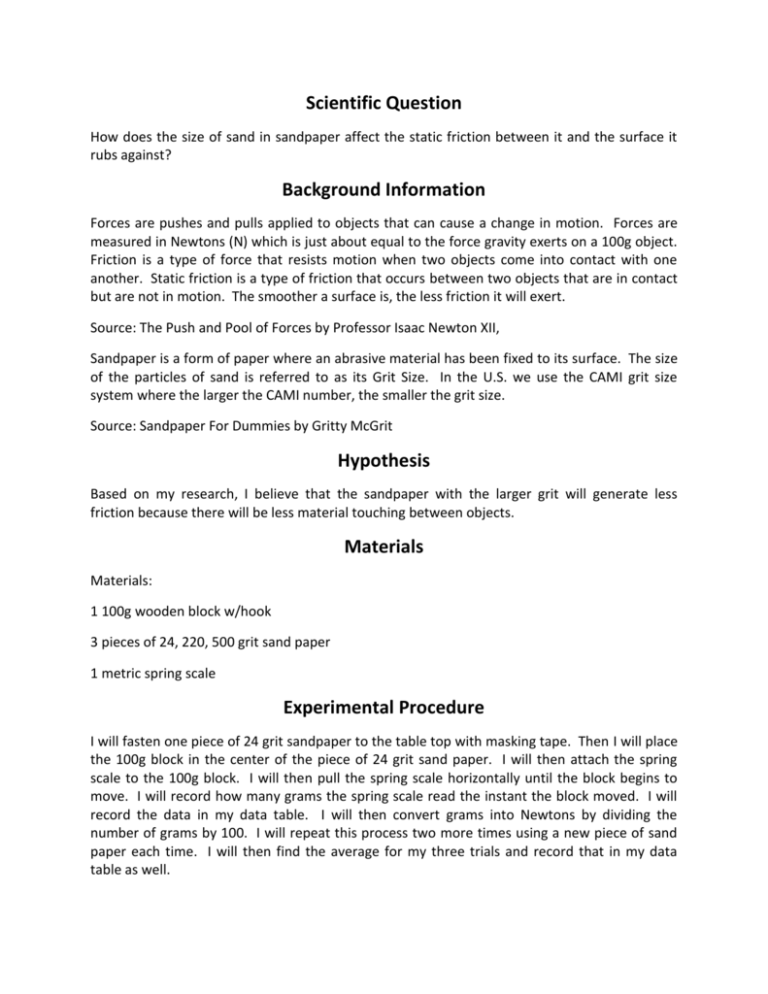
Scientific Question How does the size of sand in sandpaper affect the static friction between it and the surface it rubs against? Background Information Forces are pushes and pulls applied to objects that can cause a change in motion. Forces are measured in Newtons (N) which is just about equal to the force gravity exerts on a 100g object. Friction is a type of force that resists motion when two objects come into contact with one another. Static friction is a type of friction that occurs between two objects that are in contact but are not in motion. The smoother a surface is, the less friction it will exert. Source: The Push and Pool of Forces by Professor Isaac Newton XII, Sandpaper is a form of paper where an abrasive material has been fixed to its surface. The size of the particles of sand is referred to as its Grit Size. In the U.S. we use the CAMI grit size system where the larger the CAMI number, the smaller the grit size. Source: Sandpaper For Dummies by Gritty McGrit Hypothesis Based on my research, I believe that the sandpaper with the larger grit will generate less friction because there will be less material touching between objects. Materials Materials: 1 100g wooden block w/hook 3 pieces of 24, 220, 500 grit sand paper 1 metric spring scale Experimental Procedure I will fasten one piece of 24 grit sandpaper to the table top with masking tape. Then I will place the 100g block in the center of the piece of 24 grit sand paper. I will then attach the spring scale to the 100g block. I will then pull the spring scale horizontally until the block begins to move. I will record how many grams the spring scale read the instant the block moved. I will record the data in my data table. I will then convert grams into Newtons by dividing the number of grams by 100. I will repeat this process two more times using a new piece of sand paper each time. I will then find the average for my three trials and record that in my data table as well. I will fasten one piece of 220 grit sandpaper to the table top with masking tape. Then I will place the 100g block in the center of the piece of 220 grit sand paper. I will then attach the spring scale to the 100g block. I will then pull the spring scale horizontally until the block begins to move. I will record how many grams the spring scale read the instant the block moved. I will record the data in my data table. I will then convert grams into Newtons by dividing the number of grams by 100. I will repeat this process two more times using a new piece of sand paper each time. I will then find the average for my three trials and record that in my data table as well. I will fasten one piece of 500 grit sandpaper to the table top with masking tape. Then I will place the 100g block in the center of the piece of 500 grit sand paper. I will then attach the spring scale to the 100g block. I will then pull the spring scale horizontally until the block begins to move. I will record how many grams the spring scale read the instant the block moved. I will record the data in my data table. I will then convert grams into Newtons by dividing the number of grams by 100. I will repeat this process two more times using a new piece of sand paper each time. I will then find the average for my three trials and record that in my data table as well. Results Force Needed to Move 100g Wooden Block CAMI Grit Trial 1 (g) Trial 1 (N) Trial 2 (g) Trial 2 (N) Trial 3 (g) Trial 3 (N) AVG (N) 24 500 5 550 5.5 450 4.5 5 220 250 2.5 225 2.25 275 2.75 2.5 500 100 1 95 0.95 105 1.05 1 Conclusion Based on my data it took an average of 5N to move the wooden block across 24 grit sandpaper as opposed to 2.5N on 220 grit, and 1N on 500 grit sandpaper. This disproves my hypothesis because the smaller grit sandpaper required less force to move the wooden block than the larger grit which means that it exerted less friction on the block. I believe that this is because the smaller grit sandpaper is smoother than the larger grit sandpaper. I believe these results are accurate and unbiased. The one thing I can do to improve my results if this test was done again is to use more grit sizes to increase the amount of data I collect. Application I believe that this experiment can be applied in many important situations. One situation is in the types of roads we build and the safety involved. For example, on streets with a lot of stop and go traffic, we can incorporate small stones to keep the streets from being completely smooth to increase the friction between the roads and a vehicles tire. This will help a vehicle stop sooner and will provide more traction when maneuvering. We can also apply this to freeways where vehicles do not stop as often by making these roads as smooth as possible. By doing so, we will decrease the amount of friction between the vehicle and the road which would result in better gas mileage.

